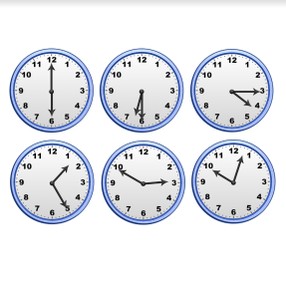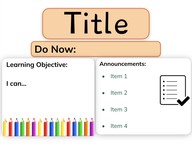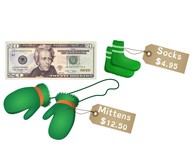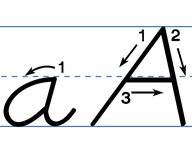



8,000 schools use Gynzy
92,000 teachers use Gynzy
1,600,000 students use Gynzy
General
Students will be able to tell the time in minutes, quarters, half and whole hours on the analog clock.
Standards
CCSS.MATH.CONTENT.1.MD.B.3
Learning objective
Students will be able to tell time on analog clocks.
Introduction
Which clock belongs with which time? Draw a line to connect the matches.
Instruction
Discuss the importance of being able to tell time on the analog clock. Remind students that the 12 always goes at the top of an analog clock. Then explain how the hands on a clock work. There are two hands on the clock, the big, or minute hand, and the little, or hour hand. The little hand tells us which hour it is, while the big hand tells us how many minutes. When the big hand is on the 12, it is a whole hour. Show a clock with the big hand on the 12 and the little hand on the 1. Tell students that it is 1 o'clock. Repeat this with the terms whole hour, half hour, quarter hour, 20, 10, and 5 minutes past/to. Show students how they know when to count past or to. Using the clock, show that every minute counts, and that from 1-14 become minutes past, then 15 is quarter past, 16-29 is minutes past, but 30 is half past. From 31-44 it is minutes to, 45 is quarter to, and 46-59 is minutes to. You can choose to have students follow along on an individual instruction clock for this portion. Then have students determine the time given in the example clocks on the interactive whiteboard.
Check that students are able to tell time using an analog clock by asking the following questions:
- What is the difference between the big hand and the little hand? What do they show?
- How do you say that the big hand has crossed the 12?
- Why is it useful to be able to tell time?
Quiz
Students are given ten questions in which they must write down the times given by a variety of times on analog clocks.
Closing
Discuss the importance of knowing how to tell time, so they can tell what time it is. Then ask students to form pairs. Give each pair an instruction clock. Explain that the first student must set a time with a whole hour, half hour or quarter of an hour. The other student must tell the time. If they get the correct answer, they swap and then can continue taking turns.
Teaching tips
Students who have difficulty with this learning goal can be supported by practice with the instruction clock. Have students refresh their knowledge on what the big hand and little hand do and show, and start by practicing whole hours, then move into half and quarter hours. Remind students that an analog clock always has 12 at the top, 6 at the bottom and 3 and 9 at the right and left respectively. That way they can always find the numbers on the clock.
Instruction materials
Instruction clocks
The online teaching platform for interactive whiteboards and displays in schools
Save time building lessons
Manage the classroom more efficiently
Increase student engagement
Discover more!
About Gynzy
Gynzy is an online teaching platform for interactive whiteboards and displays in schools.
With a focus on elementary education, Gynzy’s Whiteboard, digital tools, and activities make it easy for teachers to save time building lessons, increase student engagement, and make classroom management more efficient.



